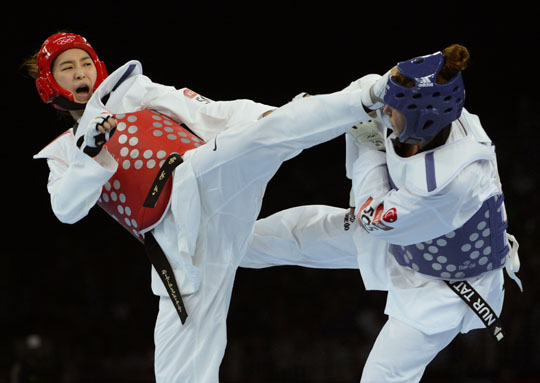Looking for Non Korean Tae Kwon Do History? Learn more about the non-Korean tae kwon do history and its evolution into a Korean martial art form…
Today Taekwondo is a recognized Korean martial arts form. The main reason for its identity is that it expresses the soul of its native country. Tae kwon do has been integral in spreading Korean culture across the globe and therefore it is considered an important cultural heritage. However, there are many misconceptions pertaining to its origins and how it developed.
Influence of Non-Korean Tae Kwon Do History on Korea
Although it is normally recorded in history books as the martial art form that evolved during the Three Kingdoms Era, it has been discovered that it originated as an offshoot of Japanese Karate. This actually happened during the early 20th century when Japan occupied Korea.
When the Japanese invaded Korea the founding fathers of tae kwon do started incorporating Japanese karate techniques into their training sessions. This was an attempt to transfer Korean tae kwon do techniques into Japanese martial arts to influence the Japanese with Korean culture.
Some aspects of non-Korean tae kwon do, which include Subak as well as Taekkyon were also amalgamated into training sessions. The new name was meant to cover up the non-Korean tae kwon do origins of the new art form.
Differences between Non-Korean Tae Kwon Do and Korean Tae Kwon Do
The major difference between non-Korean tae kwon do and oriental tae kwon do is that the Korean version is a competitions based sport whereas Japanese karate is a form of martial arts rather than a sport.
Since many efforts have been made to remove the Japanese influence from Korean tae kwon do, the practitioners of this martial art form have basically split into two factions. One regards the traditional martial arts as a competitive sport.
The traditional version however focuses on philosophies of karate, training principles as well as the kata and techniques as a lifestyle. Japanese karate forms of judo and kendo greatly influenced the development of martial arts in Korea and can perhaps be the most distinct non-Korean tae kwon do forms identifiable today.
Concept of Martial Arts
Basically martial arts were developed in Japan when sportsmanship on a battlefield was transferred into human movement in a philosophical manner. This concept never existed in Korea and, in fact, physical combat skills were considered lowly and looked down upon because of the origins and popularity in the lower stratas of Korean society. This is completely different from the Japanese and other Oriental psyche, where human movement or tao is considered graceful and honorific.
Non-Korean tae kwon do history is based on two aspects, spiritual and physical. It is interesting to note that the non-Korean tae kwon do history and it origins are spirituality-based but that element is, of course, discarded in foreign countries where people seem to consider the link between spirituality and tae kwon do as being restricted to spirituality derived from Buddhism.
However, this is far from the truth because spirituality in terms of this martial art form speaks of the principles and traditions behind the non-Korean tae kwon do forms. It is basically a means of inducing responsible conduct in practitioners of this martial arts form to use their skills to avoid unnecessary violence.





